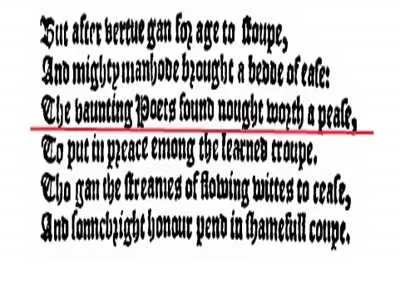Exploring the Quirks of Old English Letters and Language Evolution
Have you ever stumbled upon a recipe for a cockatrice and wondered about the peculiar ‘p’ shaped letters? These letters are remnants of Old English, which utilized additional characters derived from the ancient Runic script. Understanding these letters not only enriches our appreciation of the language but also highlights the fascinating evolution of English.
In Old English, two notable letters were used: Ƿ (wynn) and Ð (eth). The letter wynn represented the /w/ sound, while eth was a voiced dental fricative, pronounced like the ‘th’ in “this.” Another letter, Þ (thorn), represented a voiceless dental fricative, similar to the ‘th’ in “thin.” While wynn and eth fell out of use around 1300, thorn lingered into the Early Modern period. Early printers often used thorn with a superscript letter /e/ to abbreviate the word ‘the’ as þe, especially when space was limited. In contrast, the full form ‘the’ was used when space allowed. Similarly, þt became a common abbreviation for ‘that.’
Over time, the thorn character became confused with the letter ‘y,’ leading to the mispronunciation of words like ‘ye’ for ‘the.’ This confusion persists in phrases like “Ye Olde Tea Shoppe,” where the first word is incorrectly pronounced as ‘ye’ instead of ‘the.’ To set the record straight, it should be pronounced as “The Old Tea Shop.” The playful misinterpretation of Old English has led to some amusing linguistic quirks, but it’s essential to remember that language evolves, and we should embrace its current form.

Another example of linguistic evolution is the word ‘pease,’ as in ‘pease-pudding.’ In Old English, ‘pease’ was singular, but when the final /e/ was dropped, it transformed into ‘peas.’ This change led to the assumption that ‘pea’ must be the singular form, which is a misconception. Historical texts, such as Spenser’s Shepherd Calendar, reference ‘pease’ as singular, while Chaucer’s Legende of the Goode Women uses ‘pesen’ as the plural form. Similarly, Langland’s Vision of Piers Plowman also illustrates the use of ‘pees’ as singular and ‘presen’ or ‘peses’ as plural.
The ampersand (&) is another character with an intriguing history. It originated from the Latin word ‘et,’ meaning ‘and.’ The letters ‘e’ and ‘t’ were combined into a ligature, creating the ampersand symbol. A whimsical interpretation suggests that the symbol resembles a sitting cat with a raised paw, leading to the playful name ‘and-pussy-and.’ In old classrooms, students recited the alphabet with the prefix ‘per se’ for letters that could stand alone as words. The letter ‘A’ became ‘A-per-se,’ signifying excellence, while ‘X Y Z and &’ was recited as ‘Ecks, Wye Zed and per se and.’ This eventually morphed into ‘ampersand.’
In a modern twist, some have proposed that the @ symbol should be called ‘ampersat,’ derived from ‘and per se @’ or ‘and by itself at.’ This playful approach to language reflects the ongoing evolution of English and its symbols.
In conclusion, the quirks of Old English letters and the evolution of language remind us of the rich tapestry of history that shapes our communication today. By understanding these changes, we can appreciate the depth and complexity of the English language, celebrating its journey from ancient scripts to modern usage.

